In 1992 we were looking for programs
that would do more than Ami-Pro and Microsoft Word. Even at this time most of
the staff was still using Word Perfect which in 2018 has gone out of style.
Microsoft got their lunch when they bundled more products in Microsoft Office.
A few schools were using Visual Basic but we kept looking because we did not
want to learn how to program. Along with the librarian, Jerri Gurley we chose and purchased
Asymetrix Toolbook Multi-Media.
We were lost but after calling the Asymetrix
Company out in Seattle, Washington we became familiar with Carole Statham, who
gave us a bunch of other people making projects with the Toolbook software.
There was even a list serve where you could post problems and interesting
persons would give you answers. We bought the notebooks filled the how to work
the tools to develop the program. Most of it was too easy to attract any
students, but it was a start. I had no idea of what we were getting in but I
knew we wanted something students could interact with. At this point in, and because
of the librarian's idea we could buy the 600 dollar software like we were buying a book
and so we got a bunch at the time who knew how helpful they would be in making
fun stuff for students. The teacher purchased the two workbooks below and took a 700 dollar program in Atlanta for three days. The school system did not pay for these.
|
It's 1996. While teaching at Gordon Central, Gene Joy's sister brought in the above CD-ROM for the class to see. We were studying the impact of Napoleon in a world history class. The creative people at Dorling Kindersley did some amazing animations. They took Stephen Biesty's drawings of an 18 hundreds British warship and animated them. Our favorites were the amputation and the men seating at the head of the ship. We used the CD as a way to show students, but as time went by we bought more to let the students play with it. Some would come back after class to play with it. It was a great very engaging because after playing the animations in different parts of the ship they would see an animation of the stowaway leaving the scene. Clicking the screen they would get a page with the stowaway's picture and how many more times they would have to catch him
|
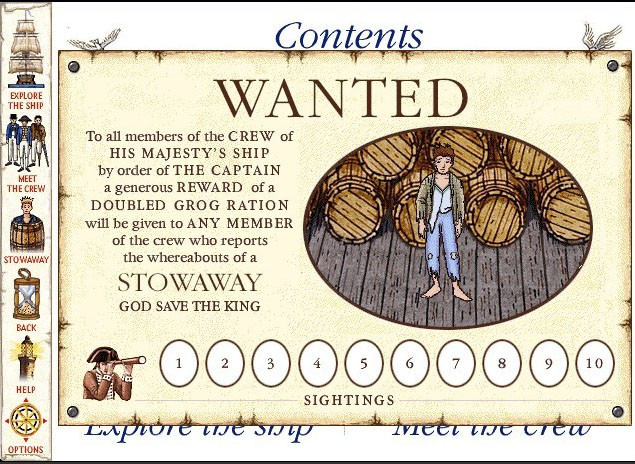 |
| Take a longer look |
|
|
So, once they got this page the hunt was on. What a way to motivate students! When all 10 sightings were filled in, users had to locate him in the room to have the guards arrest him. We got in touch to DK to get the answer. I was tickled to see the joy in students learning this way. Take a look.
|
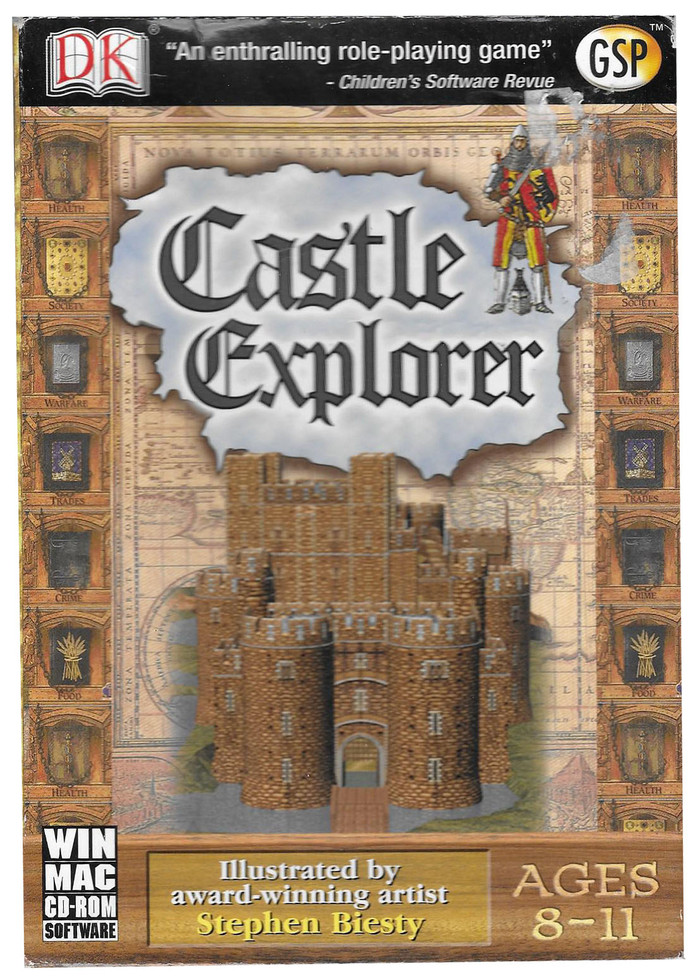 |
| Take a look |
|
|
The other software we found was the above Castle Explorer by Dorling Kindersley, who once again took Stephen Biesty's drawing of a castle and turned it into a learning game. This game was similar to the Stowaway game. There were no animations, so you entered the castle as a spy (girls had the maiden outfit ) (guys had the knight outfit) - You received a spy chest where you had to locate four items around the castle, 5 pieces of a map, and answer several questions that were scene specific. The students also got to collect gold coins by clicking on them as they went into the spy chess.
|
Students also got to go in 3_D rooms where they could explore for more map pieces. Some times they were confronted by the people of the room and get sent to the dungeon. That's where the gold coins came in to pay off the guard of the dungeon.
|
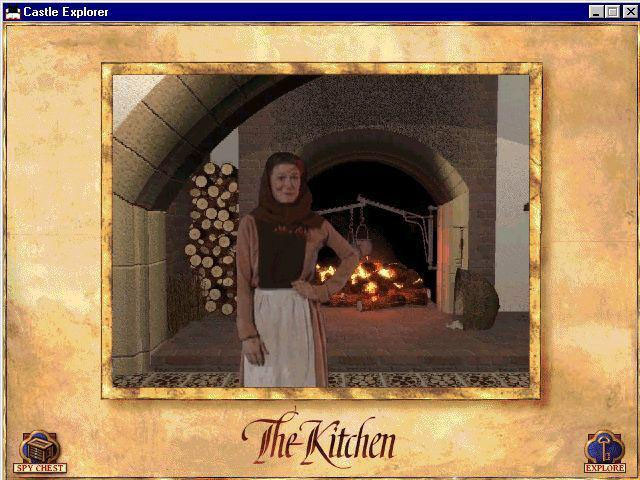 |
| Take a Look |
|
|
The characters in the 3-D rooms would sometimes ask you a question like the one above and if you got the answer incorrect you went to the dungeon.
|
The best recommendation from Carole Statham was Stephen Hustedde's book, Developing with Asymetrix Toolbook 1996. After contacting Stephen, he shared ideas from his nursing program from Arizona State. This computer file was loaded with tons of examples that were converted into World History programs.
|
 |
| A simple test with no grading - Longitude is the answer! |
|
|
Most of the above quizzes had log files that looked something like this. This file was made possible with the help of Rob Ballard. This code was put in the "Grade Answers" button. clear sysError
fileName="C:\Windows\Desktop\Maptest.txt"
openFile fileName
if sysError is not null then
createFile fileName
end if
logEntry=text of recordfield "title" & "," & text of recordfield "name" \
& "," & text of recordfield "date" & "," & text of recordfield "time" \
& "," & text of recordfield "score" & CRLF
writeFile logEntry to fileName
closeFile FileName
forward
send exit
end
|
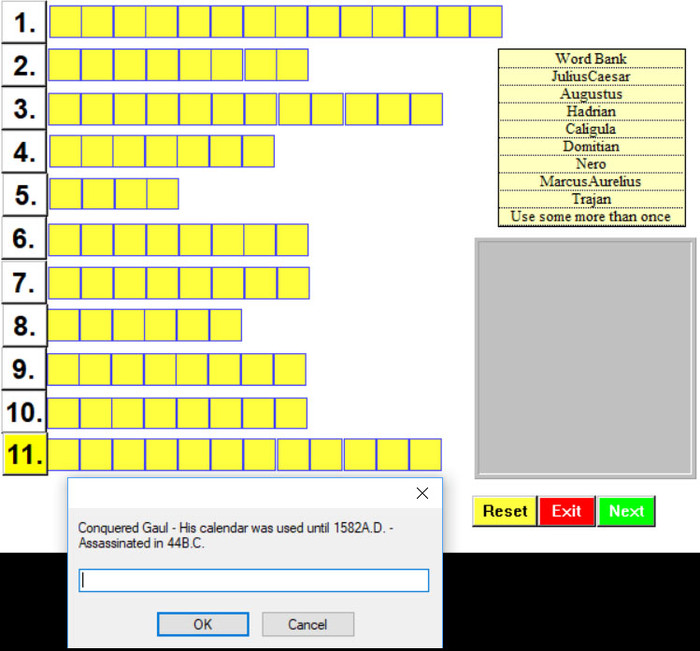 |
| Puzzle Activity - Students worked in two's to answer these questions. Books were now stored in the classroom. If a student needed to study they could check out a book. All these activities were on-line for the students. |
|
|
These are the files Stephen Hustedde helped me to create these applications. The Crossword puzzle - students would click a number button. A request file would appear with a question and a answer blank. After looking up the answer the two person group would enter JuliusCaesar with no spacing and click "OK." If the answer was correct the yellow boxes beside #11. would show the text "JuliusCaesar" and Caesar's picture in the grey box. As you might have guessed, this activity changed the nature of the instructor job. Now, the instructor would be a helper and a manager as well as a creator of activities.
|
 |
| Setup Page for a Concentration Game |
|
|
As time went by, Stephen came up with a cool way to setup questions in Toolbook. Back then, the objects could contain code, so the teacher could click the object with a LEFT click while holding down the SHIFT and CTRL keys on the keyboard. See the question format in the diagram below.
|
Published in 1999, As the users clicked the numbers - a clip was played from the Indiana Jones movie "The Last Crusade". Indy's Dad had been shot by the bad guy, so Jones had to cross the "Leap of Faith" bridge in order to save his Dad(Sean Connery)."You must hurry, Indy" "It's a leap of faith" "I'm through" "You must believe , boy, you must" "It's impossible" There were 11 clips from the movie. This was too cool back in 1989 when the movie was made. If the students got the wrong answer from one of the Ask or Request questions about the early history of man then the Jones character fell down the side of the cliff and to continue they had to hit the "Start Over" button. As Jones fell we played the sound clip from the previous challenge. Crossing over the bridge made of rocks that spelled God. Later, Stephen Hustedde helped me make a program where we put the chapter vocabulary along with a clue and the vocabulary term appeared in the rocks. We then turned it into a game between two teams of students
|
 |
| AfterEffects - Jones and the Leap of Faith |
|
|
I am including the link to remind those who did not see it. Recreation or Indiana Jones INVISIBLE BRIDGE Tutorial | Miniature model & After Effects!
|
 |
| 50 points for Art Question |
|
|
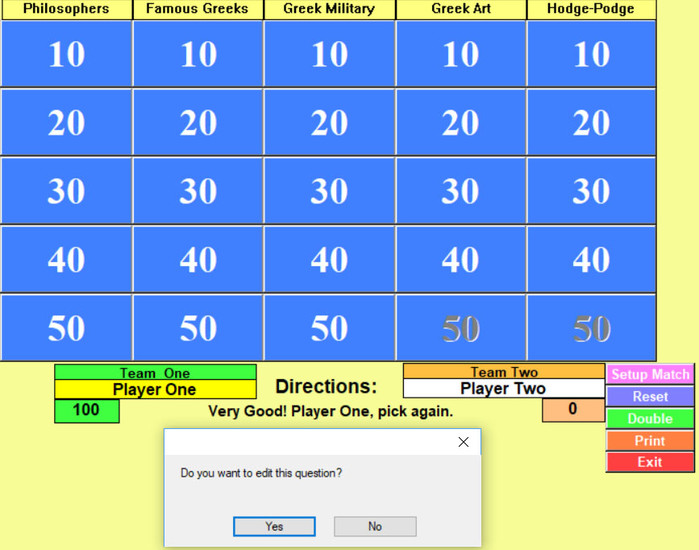 |
| Need a new question? Setup for another game? We could do it without re-inventing the wheel. The answer key was printed out when the teacher held down the SHIFT and CTRL keys on the keyboard and RIGHT CLICKED the PRINT button. |
|
|
The Wheel of Fortune This is a zip file containing
Neuron which needs to be installed first before running the program
below. When extracting the zip file, keep the sound files in the same
extracted folder. This still works on your compuiter!
|
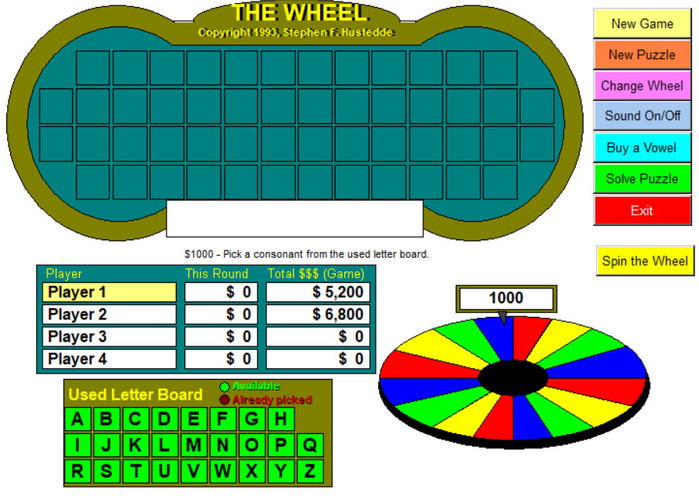 |
| Wheel of Rome - Stephen's Gift To Education |
|
|
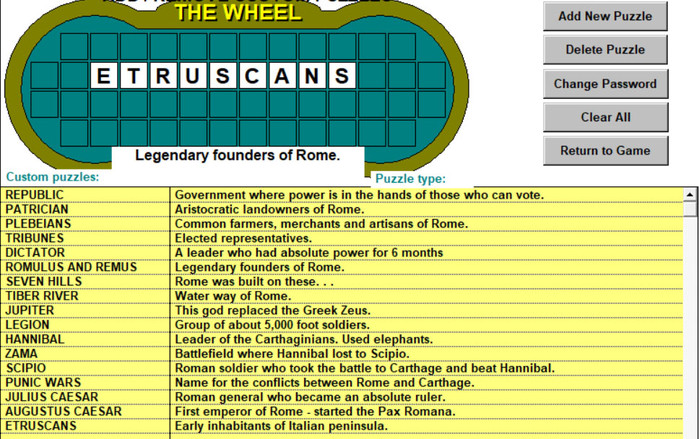 |
| Setup Page For Wheel of Fortune |
|
|
 |
| Roman Leaders - This game let the students mouseover the leaders which would reveal a clue. Then they would click the blue button to the correct leader. Students could check their progress to see how many they got right by clicking the "Check Answers" button. |
|
|
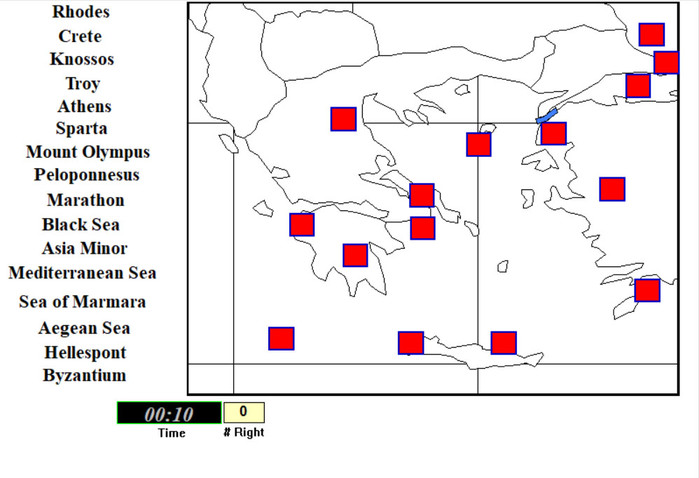 |
| Greek Map Challenge |
|
|
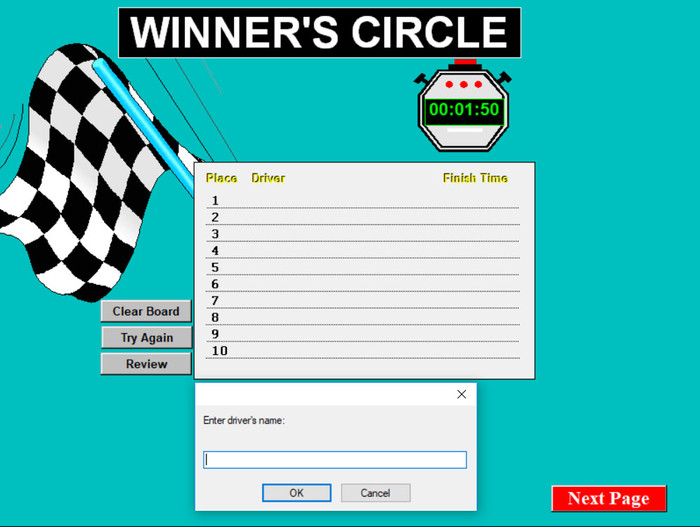 |
| The Greek Map Leader Board |
|
|
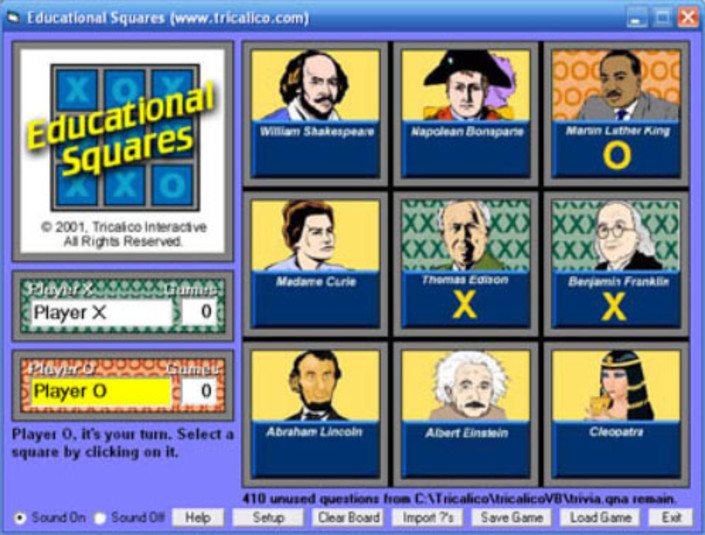 |
| Stephen's Products At Tricalico |
|
|
 |
| A Day of Celebration for Students - Money for Computers |
|
|
 |
| Mr. George Alexander Made it happen! |
|
|
George Alexander
The job I was applying for was a history teacher with wrestling experience. I gave Mr. Alexander a lot of the information from above. The whole interview changed on the spot. Now, they wanted a person to teach programming. What a lucky shot. This was the most supportive principal I ever had in all my years of education. In creating all the content for class I would bring my own tower and data projector to class. Before I know it the librarian comes to me with a laptop in size a nice carrying case. She simply said Mr. Alexander wanted you to start using this. I was shocked! Never in all my years has this happened before. The next thing I know my classroom had a data projector mounted on the ceiling. Before I was able to get settled in with that here comes a Smart Board. I only wish I had met Mr. Alexander earlier in my career. The next thing I know, I'm working with a group of teachers who plan to teach a laptop program to one group of students. The lucky 16 students got to carry around a laptop for all their classes. Hot spots were installed so they could get the Internet at any place in the building. The programming class did a little of Visual Basic before converting to Toolbook. As time went by it changed over to Flash. Mr. Alexander purchased all these for that class. We never used books for that class either. Mr. Alexander ask me along with Olivia Steele to teach teachers at Etowah the basics of technology. Olivia did the teaching, I just went around and helped. We had a booklet from the state to cover the basics. Microsoft Word, Excel, and PowerPoint were the main stay of their learning. It was really just an introduction but it got many started with using PowerPoint as a way to interact with the students. Meanwhile, I was put in charge of the school website. We used FrontPage to put up our site. It started out slow but the goal was to linkup an instructor's picture with their own website. Some of the teachers refused to be in the yearbook so I went and found them on my off period and snapped them. The guys in the automotive and shop were notorious for being hard to find. Before long, teachers wanted to change out the school photograph with a glamor shot. It was fun to know all the people in the school.
|
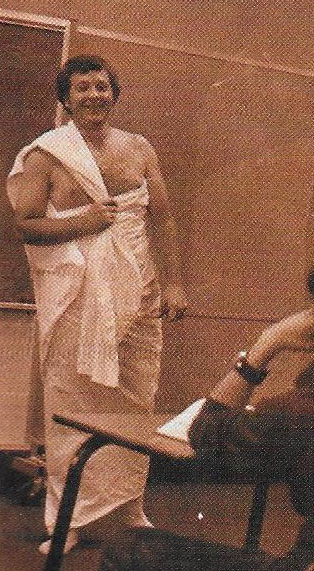 |
| Mr. Alexander spices up Greek Philosopher Day at Walton High School |
|
|
Mr. Alexander was a teacher back in day at one of the most successful high schools in the state, Walton High School. Walton was a charter school in Cobb County so they were always on the next best thing. Neither of by academic teams, Gordon Central or Etowah were able to beat them at academic tournaments. Tons of smart students came from there. George was part of the force to start the Advanced Placement program at Walton. So, adding to one's education was always in his background. He helped me to become an advanced placement teacher in A.P. Government and later in A.P. European History.
|
|
|